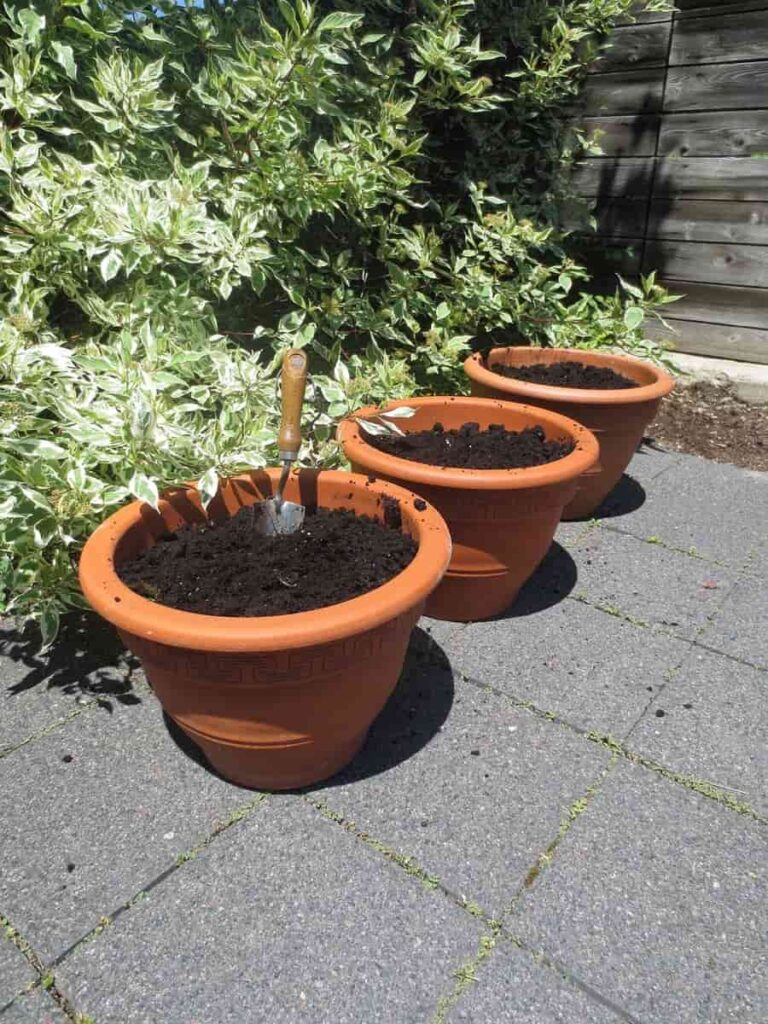Soil compaction is a common problem when growing plants in pots. It results in hard, dense soil that can be difficult to work with and doesn’t hold water or nutrients well. You can do a few things to prevent soil compaction and make your potting soil more loose and friable. This blog post will explore how to prevent soil compaction in pots. We will discuss why it happens, how to test for it, and tips and tricks to loosen the hardened potting soil. By following these tips, you can have happy, healthy plants that are easy to care for.
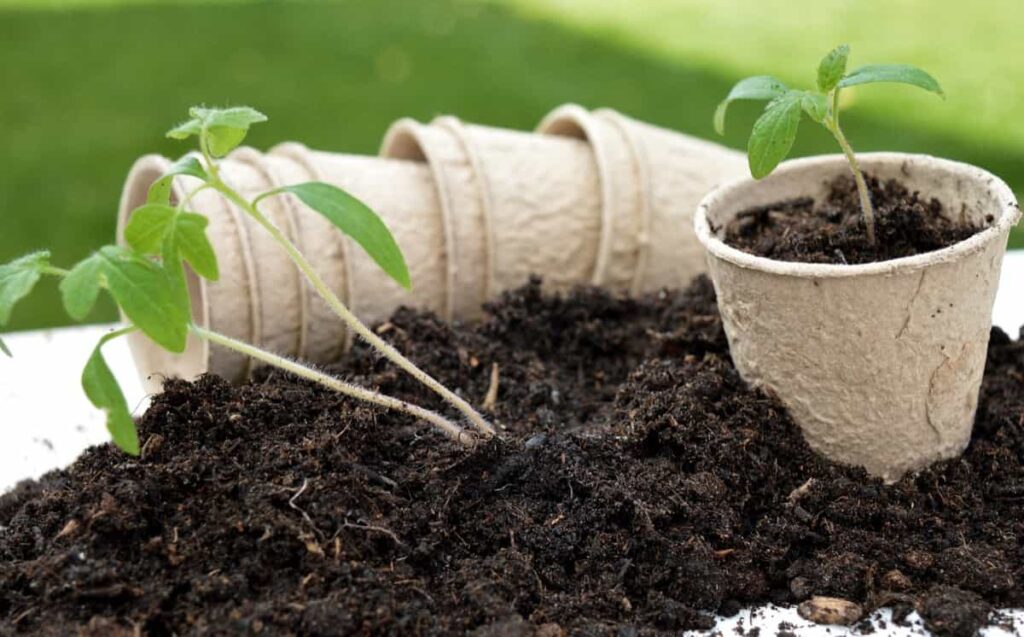
How to prevent soil compaction in pots
The problem with soil compaction
When it comes to potting soil, compaction is often the enemy. Compacted soil can lead to many problems, including poor drainage, low oxygen levels, and plant stress. Soil compaction can be caused by various factors, including heavy rain or irrigation, tilling or digging too deeply, and even walking on wet soil. In pots, compaction is often the result of too much water or insufficient drainage. Fortunately, there are certain simple steps you can take to prevent soil compaction in your pots:
- Make sure you’re using a light, well-draining potting mix.
- Water your plants carefully and avoid overwatering them.
- If your soil does become compacted, loosen it up with a fork or other tool before replanting.
The benefits of loosening potting soil
The benefits of loosening potting soil are many. Loosening the soil will allow air and water to penetrate the roots more efficiently, promoting a healthier root system. Additionally, loosening the soil will also help prevent compaction, which can lead to problems with drainage and aeration.
In case you missed it: Potting Soil Mix for Flowers – Preparation Method
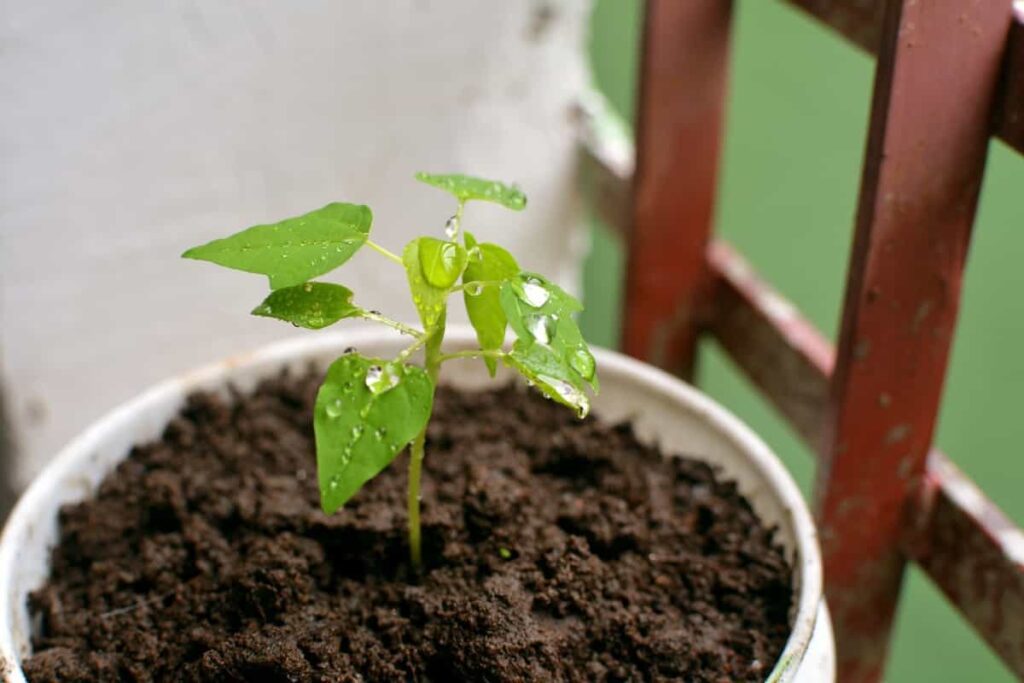
Tips to loosen hardened potting soil
- Water the potting soil thoroughly and then let it drain.
- Use a spade or trowel to loosen the top few inches of potting soil. Be careful not to damage the roots of plants growing in the pot.
- Gently remove any plants from the pot and set them aside.
- You will need to fill the bucket with equal water and perlite or sand. Stir the mixture well to ensure the perlite or sand is evenly distributed throughout the water.
- Pour the mixture over the potting soil until it’s saturated and several inches of water pooled at the pot’s bottom.
- Allow the mixture to sit for 15-30 minutes so that it can soak into the potting soil and loosen up.
- Gently replant any plants removed earlier, careful not to compact the soil around their roots.
When to loosen potting soil
When the potting soil feels hard and compacted, it’s time to loosen it up. It is a good idea to enrich with organic matter, such as compost or peat moss. You can also use a garden fork or trowel to loosen the soil. Be sure to do this carefully so you don’t damage the roots of your plants.
In case you missed it: How to Make Compost Tea for Your Garden: Benefits to the Plants and Application Methods
How often to loosen potting soil
When it comes to loosening potting soil, there is no one-size-fits-all answer. The frequency with which you need to loosen the soil will depend on several factors, including the plants you are growing, the size of your pots, and the amount of watering and fertilizing you are doing. If you are growing fast-growing plants that require a lot of watering and fertilizing, you will need to loosen the potting soil more frequently than if you are growing slow-growing plants that require less water and fertilizer.
Similarly, if you have large pots with a lot of soil, you will need to loosen the potting soil less often than small pots with less soil. In general, loosen the potting soil every few weeks to prevent it from becoming compacted. If you notice that your plants are not growing as well as they should be or if they seem to be struggling to get enough water or nutrients, it may be time to loosen the potting soil.
How to repot a plant with compacted soil
If your plant’s soil is compacted, it can be difficult for the plant to get the nutrients and water it needs to thrive. Repotting your plant with fresh, loose soil can help alleviate this problem. Here’s how to repot a plant with compacted soil:
- Carefully remove your plant from its current pot. If the root ball is very compacted, you may need to gently loosen it with your fingers or a small tool before removing it from the pot.
- Place your plant in its new pot and fill it with fresh, loose soil around the root ball. Be sure to leave enough space at the top of the pot for watering.
- Water your plant thoroughly and place it where it will receive the appropriate amount of light and heat for its species.
- Monitor your plant closely over the next few weeks and water the plants as needed to keep the plant soil moist but not soggy. After a few weeks, your plant should adjust to its new pot and soil and begin to thrive!
In case you missed it: How to Grow a Lemon Tree at Home in the USA: From Seeds, Cuttings, Faster, In Backyard, Indoors, and Pots
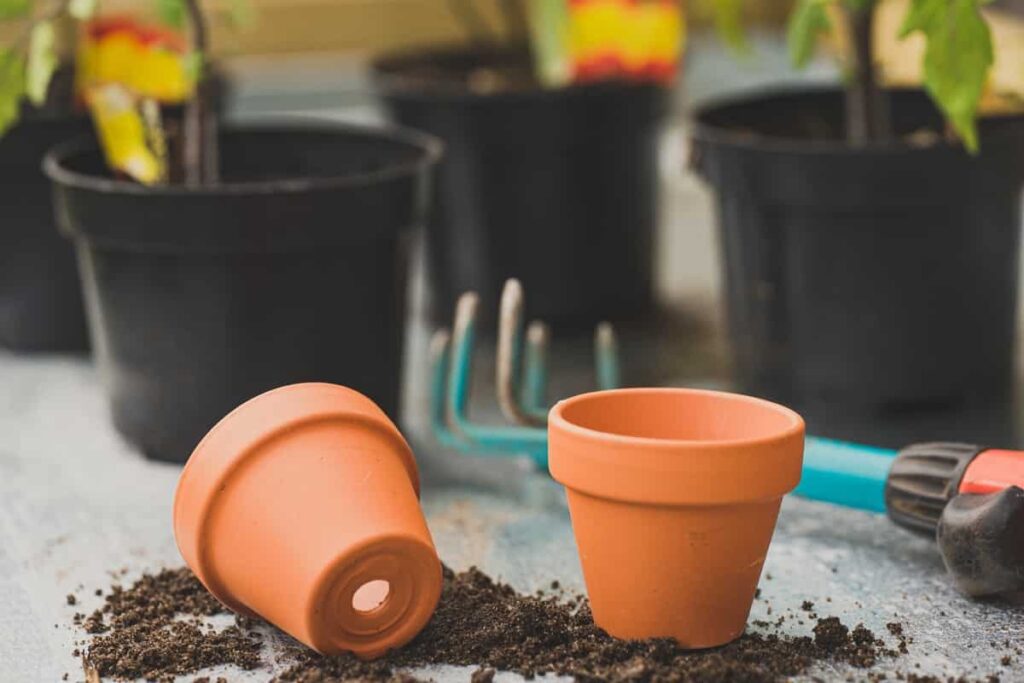
How compact should potting soil be?
When it comes to potting soil, there is yet to be a definitive answer as to how compact it should be. As a general rule of thumb, the soil should be loose enough so that roots can easily penetrate it but not so loose that it constantly collapses or forms a crust on the surface. One way to achieve the perfect compaction level is to mix different soil types until you find the right consistency.
For example, you could try mixing sand, peat moss, and perlite in equal parts. Another method is to buy pre-mixed potting soil from a gardening store. But ultimately, the best way to determine how compact your potting soil should be is to experiment until you find what works best for your plants.
Is compacted soil bad for plants?
While compacted soil isn’t ideal for plants, they can still thrive. A few things to remember if your plants grow in compacted soil:
- Make sure they’re getting enough water. Compact soil can make it difficult for water to penetrate, so you may need to water more frequently or deeply.
- Amend the soil with organic matter. This will help improve drainage and make it easier for roots to spread.
- Avoid walking or working in the area around your plants. This will only compact the soil further and make it harder for them to grow.
How to fix hydrophobic potting soil
Hydrophobic potting soil is a common problem for gardeners. The soil becomes hydrophobic when it dries out, and the water-repellent properties of the soil prevent the water from being absorbed. This can lead to plants wilting and dying. There are certain things you can do to fix hydrophobic potting soil. One is to add organic matter to the soil.
This will help to break up the hydrophobic layer and allow water to be absorbed. Another is to mulch the soil. This will also help to break up the hydrophobic layer and allow water to be absorbed. Finally, you can water the soil deeply and slowly so that the water has time to penetrate the soil.
Aerate the soil in potted plants without damaging roots
First and foremost, you should aerate the soil regularly. Aerating the soil is important, allowing air and water to reach the plant’s roots, which helps the plant grow and thrive. There are certain ways you can aerate the soil in potted plants:
- Use a hand trowel or garden fork to loosen up the soil around the plant. Be careful not to damage the roots while you’re doing this.
- Place stones or pebbles at the bottom of the pot before adding soil. This will help to allow water to drain more efficiently.
- Use an electric drill with a 1/2″ bit to make holes in the bottom of the pot. Make several holes so air and water can reach all parts of the root system.
In case you missed it: How to Grow Peanuts in Raised Beds: Soil, Propagation, Planting, and Care

Why is potting soil health important for plants?
As plants grow, they start absorbing nutrients from the soil through their roots. Therefore, the soil must have the right mix of nutrients and organic matter for the plant to thrive. If the soil is unhealthy, the plant will not be able to absorb the nutrients it needs and will eventually die. On the other hand, healthy potting soil contains inorganic materials like sand, silt, and clay and organic matter like compost, peat moss, or manure.
This mix of materials helps the soil retain water and nutrients while also drainage and aeration. The organic matter in potting soil is especially important because it provides food for microbes that help break down nutrients so plants can absorb them. Without these microbes, the plant would not be able to get the nutrition it needs from the soil. You can do certain to ensure your potting soil is healthy:
- Use a high-quality potting mix that contains a variety of organic materials.
- Add compost or other organic matter to your potting soil every year.
- Avoid using chemical fertilizers, as they can kill beneficial microbes.
- Get your soil regularly tested to ensure it has the proper nutrient levels.
How do you keep the soil moist in pots?
When potting plants, it’s important to use a potting mix that will help keep the soil moist. Look for mixes that contain sphagnum peat moss or coir, which are excellent at retaining water. You can add perlite or vermiculite to your potting mix to help with drainage and aeration while still retaining moisture. Once you’ve sorted your potting mix, ensure you’re watering your plants regularly.
In case you missed it: How to Grow Ajwain Plant: Soil, Propagation, Planting, and Care
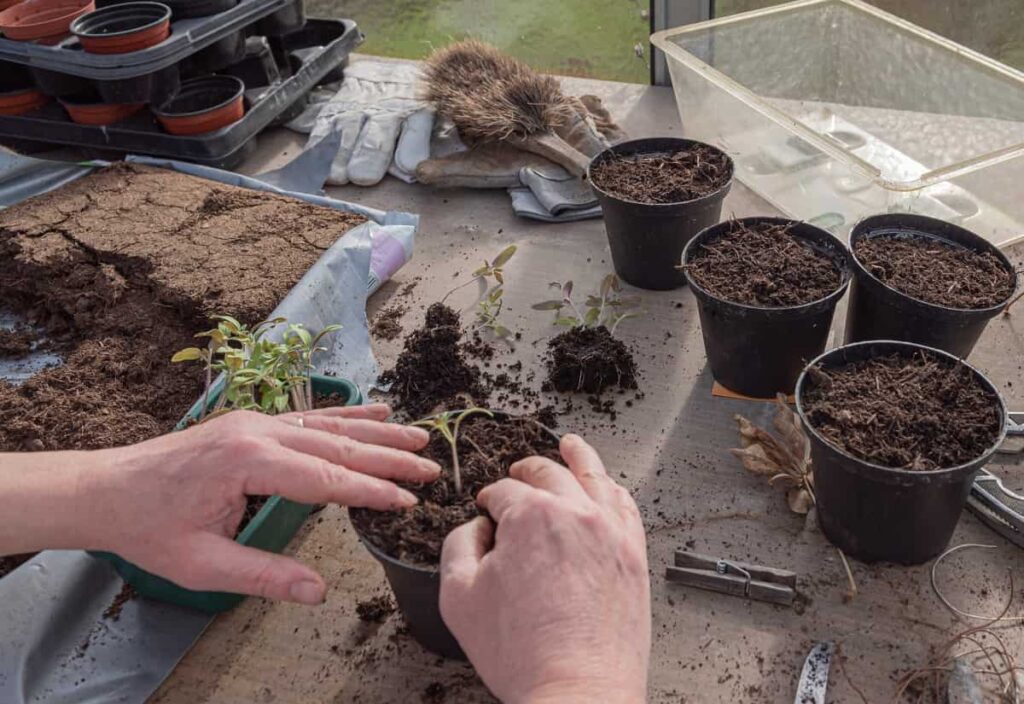
Check the soil before watering to see if it’s dry – if it is, give them a good soaking. Do not overwater the plants in pots, as this can lead to problems like root rot. If you’re unsure, under-watering is preferred rather than over-watering. Finally, consider using mulch to help keep the soil moist. This is especially useful in hot weather, as it helps to protect the soil from evaporation. You can use many different types of mulch, so choose one suitable for your plant and climate.
Conclusion
We hope these tips on preventing soil compaction in pots have been helpful. Remember, the key is to loosen the hardened potting soil regularly so your plants can get the oxygen they need. Also, ensure to water your plants deeply and evenly to avoid any issues with root rot. With some care, you can keep your potted plants healthy and happy for years.
- How to Grow Hibiscus from Flower
- Plantation Ideas for Home Decoration: A Beginners Guide
- Flower Garden Designs and Layouts for Beginners
- Planting and Spacing Techniques in Papaya: A Beginner’s Guide
- Growing Gold: Essential Techniques for Planting Pineapples
- How to Make Kalanchoe Plant Bushy: Home Remedies and Solutions
- 11 Reasons Why Your Gardenia is Not Blooming: Home Remedies and Solutions
- Eco Elegance: The Guide to Designing a Drought-Tolerant Landscape
- Gardening on a Slope: Strategies for Hillside Landscaping
- Nourish and Flourish: Top Organic Mulches for Thriving House Plants
- Everything You Want to Know about Indian Mogra Flower: Discover Uses and Growing
- Green Thumb Success: Expert Tips for Cultivating Greenhouse Pumpkins All Year Round
- Maximize Growth & Flavor: The Ultimate Guide to Companion Planting in Herb Gardens
- How to Control Rhododendron Problems Naturally: Home Remedies and Organic Ways to Fix Them
- Natural Magic: The Remarkable Benefits of Cinnamon for Plants
- Best Steps to Revive Dying Tulip with Natural and Organic Treatment
- 10 Reasons Why Your Angel Trumpet is Not Blooming: Remedies and Treatment
- How to Fix Periwinkle Leaf and Flower-Related Problems: Natural Remedies and Solutions
- How to Fix Zinnias Leaf and Flower Problems: Discover Natural and Home Remedies
- Organic Steps to Induce Lemon Tree Flowers: A Comprehensive Guide
- Bloom Booster: Crafting the Perfect Homemade Bougainvillea Fertilizer
- Optimizing Growth: A Guide to Applying NPK Fertilizer for Potted Plants
- 10 Best Homemade Fertilizers for Rubber Plant: DIY Recipes and Application Method
- How to Boost Female Pumpkin Flowers: Effective Steps for More Flowers and High Yields
- Transform Your Indoor Garden: Top Benefits of Pink Salt for Houseplants
- 10 Best Homemade Fertilizers for Peacock Plants (Calathea): Easy DIY Guide
- Unlock Blooms: 9 Reasons Why Your Potted Chrysanthemum is Not Blooming
- 8 Reasons Why Your Potted Hibiscus is Not Blooming: Fix it with Simple Solutions
- Unlock Blooms: 9 Key Reasons Your Potted Frangipani Won’t Flower
- 10 Reasons Why Is My Ice Plant Not Blooming: Remedies and Treatment
- 10 Reasons Why My Potted Hydrangea Not Blooming: Treatment and Remedies
- 10 Reasons Why is My Wisteria Not Blooming: Remedies and Treatment
- 10 Reasons Why is My Goldfish Plant Not Blooming: Remedies and Treatment
- Maximize Your Space: Ultimate Guide to Balcony Gardening with Grow Bags
- 10 Reasons Why Your Iris is Not Blooming: Remedies and Treatment
- 10 Reasons Why Your Anthurium Plant is Not Blooming: Treatment and Remedies
